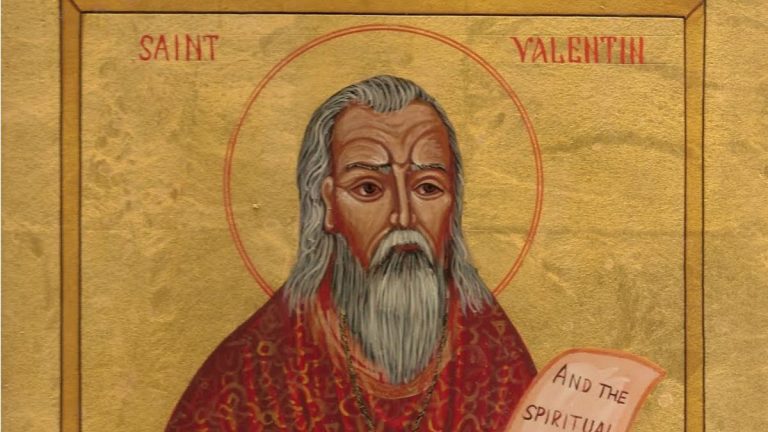To celebrate this famous day in history, we've traced the origins of St. Valentine and how his name became associated with the romantic holiday we know — and love or hate — today.
Ah, Valentine's Day!
The holiday of hearts, roses, chocolates and romance, celebrated every year on February 14, all in the name of Saint Valentine.
But have you ever wondered where this tradition came from? Who was this mysterious saint?
Well, let's just say that the origin story is a bit confusing, and there are many different theories about his true identity.
Although he is officially recognized by the Roman Catholic Church and widely agreed that he was a real person who lived in the third century AD, all that is known for certain about Saint Valentine is his name, and that he was martyred and buried on February 14. Suburbs of Rome.
According to some estimates, there are more than 10,800 saints, including more than 30 saints and even a few saints.
But two Valentines in particular stand out as possible candidates for the origins of the beloved tradition we have today.
Because of the many similarities, some researchers have speculated whether Valentine is actually the same person.
lets take alook.
A priest from Rome or a bishop from Terni?
Some believe that Saint Valentine was a Roman priest who lived around 270 AD, others believe that he was a Christian bishop who lived in a small town called Terni in Italy.
Both stories concern Emperor Claudius II, who at the time issued an edict prohibiting marriage, believing that married men made poor soldiers, due to the attachment they shared with their families and loved ones.
However, according to popular belief, Valentine defied the emperor's order and continued to perform marriages for young couples in secret, but was eventually captured, imprisoned, and sentenced to death.
While behind bars, Valentine fell in love with the jailer's daughter, whom he befriended and cured of blindness (literally love at first sight). Before his execution on February 14, he wrote her a letter signed “From Your Valentine.”
This expression of love is said to have started the tradition of sending Valentine's Day cards.
According to alternative theories, Valentine may have been executed for trying to help Christians escape the brutal conditions of Roman prisons, where they were often subjected to physical abuse and torture.
Today, the city of Terni celebrates Saint Valentine as its patron saint, and his relics are believed to be in the Basilica of Saint Valentine, a church in the city.
The church is a popular pilgrimage site for lovers and couples, who come to pray for Saint Valentine's intercession in their relationships.
Tourists can also find the alleged flower-crowned skull of Saint Valentine on display in the Basilica of Santa Maria in Cosmedin, Rome.
When did Valentine's Day begin to be celebrated around the world?
There is debate about the origins of Valentine's Day, with some believing it was chosen to commemorate the death of Saint Valentine in mid-February, while others believe it was instituted in mid-February by the Christian Church to replace the pagan festival of Lupercalia.
Celebrated on February 15, Lupercalia was a fertility festival that involved the sacrifice of a goat and a dog, the skins of which were used to gently slap women and crops in the belief that this would increase fertility.
Later, singles choose the woman's name from the jar, and couples are paired for a year, often leading to marriage.
Some theories suggest that the celebration of Lupercalia was stopped by Pope Gelasius during his reign in the latter part of the fifth century. Subsequently, the Catholic Church designated February 14 as a day of celebration, also known as “St. Valentine’s Day.”
Jack P. Oroch, a professor at the University of Kansas, believes that English poet Geoffrey Chaucer was the first to link Valentine's Day with romance in his poem “A Dialogue of Errors.”
“For this was sent on Saint Valentine’s Day / When every mistake comes to choose his mate,” he wrote in the poem.
But this could also indicate that Valentine's Day was already linked to the idea of choosing a mate or partner, and Chaucer was simply building on this tradition in his poem.
Obviously, the origins of Valentine's Day remain very confused and confusing.
But one thing is clear: Whether you're single, taken, or somewhere in between, Valentine's Day is a great excuse to eat copious amounts of chocolate.

